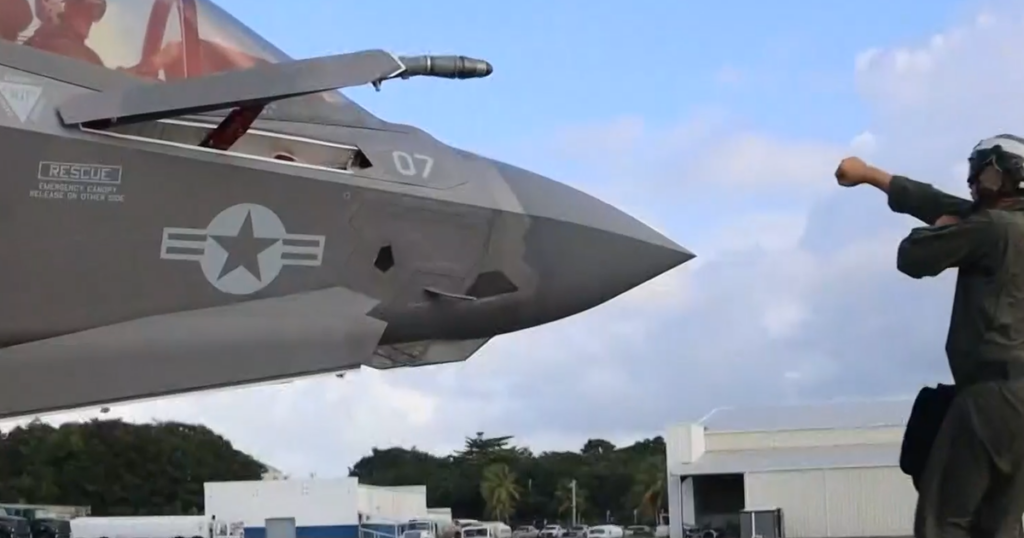A former U.S. naval base in Puerto Rico, known as Naval Station Roosevelt Roads, has recently resumed operations over 20 years after its closure. This strategic repositioning is part of broader U.S. military planning in the Caribbean amid rising tensions with Venezuela. The reopening of the base coincided with the deployment of advanced aircraft and increasing military assets in the region, as officials evaluate potential actions against the Venezuelan government.
| Article Subheadings |
|---|
| 1) Reopening of Roosevelt Roads Naval Station |
| 2) Impact on Local Community |
| 3) Military Build-up in the Caribbean |
| 4) Venezuelan Response to U.S. Actions |
| 5) Ongoing Discussions in Washington |
Reopening of Roosevelt Roads Naval Station
Naval Station Roosevelt Roads, which was operational since 1943, closed its doors in 2004. Since then, the landscape of U.S. military presence in the Caribbean has undergone significant changes. Recent geopolitical developments, particularly concerning Venezuela, have prompted a reassessment of U.S. military strategy in the region. As October dawns, the base has been recommissioned as one of five active military locations in Puerto Rico, a territory strategically situated just north of Venezuela. The decision to reopen Roosevelt Roads points to an evolving military strategy aiming to enhance readiness in response to potential threats from Venezuela.
Impact on Local Community
The reopening of the naval base has sparked a mixture of feelings among the local Puerto Rican community. Town officials, like Samuel Rivera Baez, the mayor of Ceiba, express a sense of safety due to the U.S. military presence, remarking, “Right now, the United States is the most powerful in the world.” In contrast, locals like Damien Leon reveal sentiments of anxiety and tension, fearing potential military conflict or repercussions from nearby Venezuela. The F-35 fighter jets already active in the area have become a regular part of the morning routines, waking many residents which further complicates the emotional landscape amidst military activities.
Military Build-up in the Caribbean
As the U.S. fortifies its military presence through the deployment of Advanced Fighter Jets and naval assets, the region is witnessing a marked increase in military capabilities. Reports indicate that in early September, ten F-35 fighter jets were sent to Puerto Rico specifically for operations targeting drug cartels. As of recent updates, U.S. naval forces now comprise several warships, including aircraft carriers and guided missile destroyers, conducting live-fire exercises in the region. This military build-up serves not only to counter drug trafficking but also as a deterrent to Venezuela, showcasing American military power in a provocative manner.
Venezuelan Response to U.S. Actions
Venezuelan President Nicolás Maduro has publicly condemned the perceived threats stemming from U.S. military activities in the region, denouncing them as provocative incursions meant to intimidate his government. Maduro’s rhetoric often revolves around national sovereignty, stating, “Raise your hand if you want Venezuela to become a Yankee colony.” Amidst this charged political climate, he has accused the U.S. of organizing military strikes and other aggressive maneuvers against Venezuela, aiming to destabilize his rule and bolster U.S.-aligned factions within the country.
Ongoing Discussions in Washington
In Washington, U.S. officials are deliberating potential military options involving Venezuela, weighing strategies that could include both air and land operations. Recent briefings have included discussions among top military leaders and President Donald Trump, focusing on an array of options with the goal of responding effectively to the challenges posed by the Maduro government. Such discussions, which involve key figures including Vice President JD Vance and Secretary of Defense Pete Hegseth, underscore the urgency perceived by the U.S. administration to take decisive action, particularly against drug-related crimes connected to Venezuela.
| No. | Key Points |
|---|---|
| 1 | Naval Station Roosevelt Roads has reopened after being closed for more than two decades. |
| 2 | Local reactions range from increased feelings of safety to anxiety regarding possible military conflict. |
| 3 | The U.S. has intensified its military operations in the Caribbean, deploying advanced fighter jets and naval vessels. |
| 4 | Venezuelan President Maduro has condemned U.S. actions, claiming they threaten the sovereignty of Venezuela. |
| 5 | Ongoing discussions in Washington consider military options regarding Venezuela, signaling high-level concern. |
Summary
The recent reopening of Naval Station Roosevelt Roads marks a significant shift in U.S. military posture in the Caribbean amidst escalating tensions with Venezuela. Both local communities and officials are grappling with the implications of this military presence, torn between feelings of security and apprehension. The U.S. military buildup, paired with the Venezuelan government’s resolute stance against perceived threats, underscores a complex geopolitical landscape that is likely to evolve in the coming months.
Frequently Asked Questions
Question: Why was Naval Station Roosevelt Roads closed?
Naval Station Roosevelt Roads closed in 2004 due to a shift in military strategy and budgetary considerations, impacting future U.S. engagements in the Caribbean.
Question: What types of aircraft have been deployed to Puerto Rico?
The U.S. has deployed advanced F-35 fighter jets to Puerto Rico as part of its military operations targeting drug activities in the region.
Question: How has Venezuela reacted to the U.S. military presence?
Venezuelan President Nicolás Maduro has denounced U.S. military actions as threats to national sovereignty and invoked nationalistic sentiments against perceived efforts to impose control over Venezuela.


